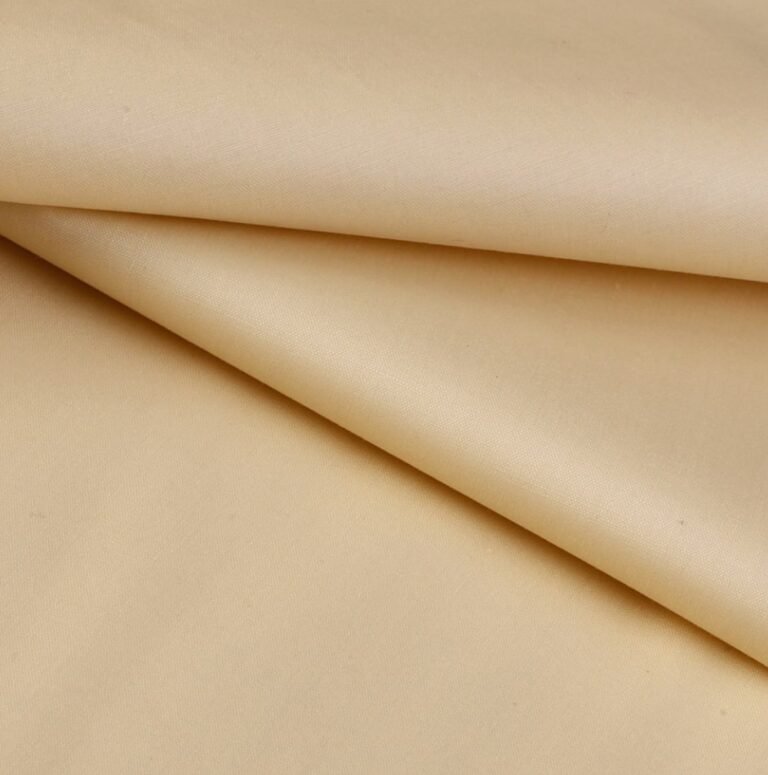Mirror acrylic sheets have become a popular choice for home decoration, office interiors, retail displays, furniture, and even DIY projects. They are lightweight, shatter-resistant, and much easier to handle than traditional glass mirrors. On top of that, they offer a modern and stylish look without the heavy weight or higher costs of glass.
But just like any other material, mirror acrylic sheets need proper care. They can remain beautiful and useful for many years if cleaned and maintained correctly. If ignored or handled roughly, they can get scratches, lose their shine, or even bend.
In this detailed guide, we will share the top 7 tips for maintaining mirror acrylic sheets for the long term. Every tip is explained in simple words so you can easily follow it, whether you are a homeowner, shop owner, or DIY enthusiast.
Why Care and Maintenance of Acrylic Mirror Sheets is Important
Before moving to the tips, let us understand why taking proper care is necessary. Many people assume that acrylic sheets are like normal glass mirrors, but they are not. Here are some reasons why they need maintenance:
- Scratch sensitivity: Acrylic is softer than glass, and that makes it more likely to get scratches from rough cloths, sharp objects, or dust particles.
- Dust and fingerprints: Since acrylic has a smooth, shiny surface, any dust, dirt, or fingerprints can be seen more easily.
- Durability factor: With proper care, your acrylic mirror can last for many years without losing its shine or clarity.
- Cost-saving: Replacing a scratched or damaged sheet can be expensive. Proper maintenance reduces the need for early replacement.
So, the key is simple: by taking small and regular care steps, you can increase the life of your mirror acrylic sheets and keep them looking like new.
Tip 1: Clean Gently and Regularly
Why Cleaning is Important
Over time, dust and fingerprints gather on the mirror surface. If you leave them for longer, the dust can stick harder, making cleaning more difficult. Also, wiping the mirror with a rough cloth can cause scratches. That’s why gentle and regular cleaning is the most basic and most important step.
How to Clean the Right Way
-
Choose a mild soap solution
Mix a few drops of mild dishwashing liquid in a bowl of lukewarm water. Avoid using harsh cleaners like glass sprays with ammonia or alcohol, as they can damage the sheet.
-
Use a soft microfiber cloth
Always use a clean microfiber or 100% cotton cloth. These are soft and safe for the acrylic surface. Paper towels or rough fabrics can create micro-scratches.
-
Wipe softly
Dip the cloth in the soapy water, squeeze it well, and then gently wipe the sheet in one direction. Do not rub hard or make aggressive circular motions.
-
Dry properly
After cleaning, take another dry microfiber cloth to wipe off any moisture. Leaving water droplets can leave marks.
Extra Tip
If dust is heavy, first blow it away with a can of compressed air or a soft brush before wiping. This avoids scratching the surface while cleaning.
Tip 2: Avoid Harsh Chemicals
Why Chemicals are Dangerous
Many people make the mistake of treating mirror acrylic sheets like glass. They use glass cleaners, window sprays, or alcohol solutions. But acrylic reacts badly to these chemicals. They can cause cloudiness, cracks, or even permanent damage.
Which Chemicals to Avoid
- Ammonia-based cleaners (Common in glass sprays)
- Acetone or nail polish remover
- Alcohol-based solutions
- Strong detergents or bleach
What to Use Instead
Stick to mild soap and water or a specially designed acrylic cleaner. These are safe and give a clear shine without any damage. If you need an occasional disinfectant, use very diluted soapy water, not chemical sprays.
Tip 3: Prevent Scratches at All Costs
The Scratch Problem
One of the biggest disadvantages of acrylic mirrors is scratches. Unlike glass, which is harder, acrylic is soft and can easily get scratch marks even with minor rough handling. Once scratched, it’s very hard to fix completely.
How to Prevent Scratches
- Handle with care: Never drag the sheet across the floor or rough surfaces while moving. Always lift and place it gently.
- Use protective films: Some sheets come with a protective layer on top. Do not remove it until after your project is complete. If storing, keep the protective film on.
- Store correctly: Always keep acrylic sheets upright, not flat on the ground, and with a soft cloth or foam in between if stacking multiple.
- Choose soft cloths for cleaning: As mentioned earlier, microfiber is best.
Small Scratch Fixing
If you notice light scratches, you can try buffing them out with a plastic polish or acrylic scratch remover. Apply with a soft cloth and rub gently in one direction only. For deep scratches, you may need professional polishing.
Tip 4: Keep Away from Heat and Sunlight
Why Heat is Bad for Acrylic
Acrylic mirror sheets are not as heat-resistant as glass. High heat can cause them to soften, bend, or warp. Continuous direct sunlight can also cause discoloration over time.
Things to Keep in Mind
- Avoid placing near heat sources: Keep the sheets away from heaters, stoves, ovens, or hot machinery.
- Sunlight caution: Don’t install them in outdoor areas where they get exposed to harsh sunlight daily. If necessary, ensure some shade or protection.
- Temperature stability: Ideal temperature range for acrylic is room temperature. Try to avoid sudden high-temperature changes.
Taking care of the environment they are placed in ensures that your sheets remain flat, shiny, and durable.
Tip 5: Handle and Install with Care
Why Handling Matters
Accidents during installation or shifting are common causes of damage. Since acrylic is lightweight, people sometimes assume it can handle rough treatment, but that is not true. Improper installation also leads to warping or stress marks.
Handling Tips
- Wear gloves: Gloves help avoid fingerprints and greasy marks.
- Lift, don’t drag: Always lift the sheet; never drag it across a floor or wall.
- Two-person job: For larger sheets, use two people to handle it safely without bending.
Installation Tips
- Use proper backing support: Acrylic mirrors are not as rigid as glass. They need a stable backing, like plywood or medium-density fibreboard, to stay flat.
- Avoid too much force when screwing: If attaching with screws, use rubber washers and do not overtighten. It can crack the sheet.
- Allow for expansion: Acrylic can slightly expand in heat. Leave a small gap around the edges when fitting.
Tip 6: Prevent Moisture and Humidity Damage
Why Moisture is a Problem
Acrylic prefers dry surfaces. In areas with high moisture, such as bathrooms, basements, or kitchens, the sheets may get water stains, warping, or even mold growth if left unchecked.
How to Protect Against Moisture
- Seal the edges: If installing in a humid place, seal the sheet edges with silicone to stop water from entering.
- Good ventilation: Make sure there’s airflow in bathrooms or kitchens to reduce moisture levels.
- Dry right away: If water splashes on the surface, wipe it gently with a dry cloth instead of letting it stay.
Tip 7: Regular Polishing for Shine
Why Polishing Helps
Even after careful cleaning, acrylic can lose a bit of shine over time. Regular gentle polishing brings back the glossy mirror-like effect and keeps it looking new.
How to Polish Properly
- Choose the right polish: Use a plastic polish or a polish made especially for acrylic.
- Apply with soft cloth: Take a small amount of polish on a microfiber cloth and rub gently in long strokes.
- Don’t overdo: Light polishing once every few months is enough. Over-polishing can cause unnecessary wear.
Extra Care Tip
If you want an extra protection layer, you can also apply an anti-static polish. This helps reduce dust attraction, meaning the sheet will stay cleaner for longer.
Additional Maintenance Tips
Apart from the seven main tips, here are a few extra bonus points for even better care:
- Do not tape directly on the mirror surface, as removing it later may leave marks.
- Avoid hanging heavy objects on or near the sheet that may bump into it.
- Keep away from sharp tools, especially while working on DIY projects around it.
- Educate family members (especially kids) about not scratching or pressing it roughly.
Common Mistakes to Avoid
Sometimes, mistakes cause more damage than natural wear. Here are common things people do wrong with acrylic mirrors:
- Using glass cleaners or acetone: Harms the surface.
- Wiping with paper towels: Leaves scratches and streaks.
- Placing acrylic mirrors outdoors without any protection: Leads to warping and discoloration.
- Fixing tightly with no gap: Causes cracks when they expand in heat.
Avoiding these mistakes is as important as following the right tips.
Final Thoughts
Mirror acrylic sheets are a wonderful alternative to glass—lightweight, stylish, durable, and safe. But they demand a little more care to keep their perfect look. By following the top 7 tips—gentle cleaning, avoiding harsh chemicals, preventing scratches, keeping away from heat, careful handling, avoiding moisture, and polishing regularly—you can keep your sheets shining for years.
Think of them as an investment not just for beauty but also for safety and practicality. With just a little extra attention, you can enjoy long-lasting clarity and brilliance from your acrylic mirror sheets.





